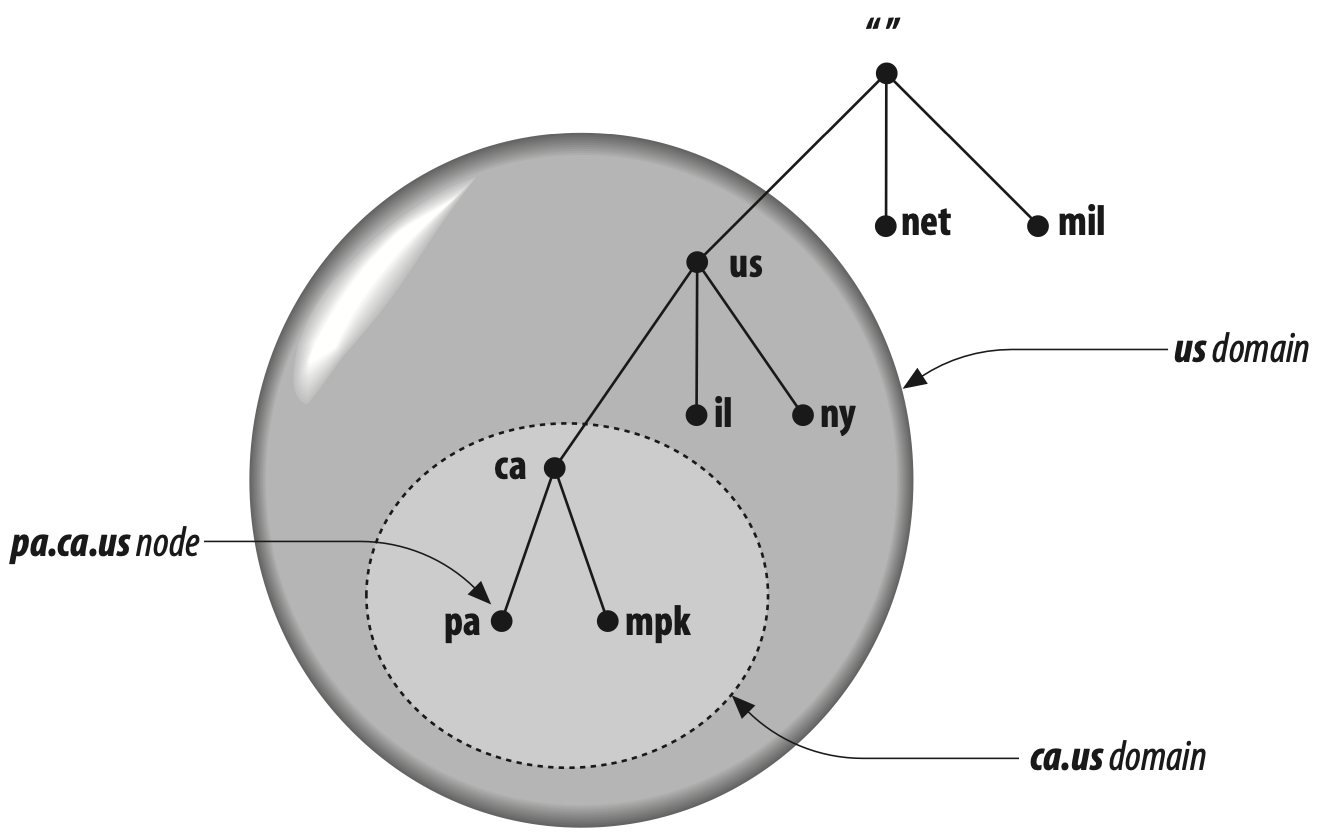Domain
A domain is simply a subtree of the domain namespace.
A domain can be spread across multiple zones
- consider that those who manage the
comdomain don't manage thefacebook.comdomain; it has delegated responsibility to facebook.facebook.comis within thecomdomain (andfacebook.comdomain), but is only in thefacebook.comzone. It is not part of thecomzone.
In the absense of subdomains (and thus delegation), the zone and the domain contain the same information
Subdomain
The term subdomain is relative. The facebook domain is a subdomain of the com domain, and the com domain is a subdomain of the root domain.
The most common subdomain is www
- The www subdomain is so widely used that most domain registrars include it with domain name purchases.
The concept of subdomain can be achieved in 2 different ways:
- The DNS zone file pertaining to the parent domain can be edited
- in other words, subdomains are contained within parent domains (this is not the case for the second)
- a record can be made to map a name to the A record.
- network operations teams consider the second to not really be a subdomain, and instead restrict the definition to only including those subdomains which are provided by the zone NS records, and any server-destination other than that.
Domain names
a domain name can be in many domains
- ex.
pa.ca.usis part of theca.usdomain, but also part of theusdomain.

Domain names are used as indexes into the DNS database.
Interior domain names (ie. not leaf nodes) can name a host and point to informa- tion about the domain; it doesn't have to be one or the other.
- ex.
hp.comis both to Hewlett Packard's domain, as well as a domain name that refers to the host that runs HPs main webserver.
When you use a domain name, the information that is retrieved depends on the protocol we used to access that information
- ex. if we are using HTTP or SSH, then we get the IP address. If we are using mail protocols, then we get mail-routing information.
Apex domain
The apex domain is the root domain, without any www subdomain.
Fully Qualified Domain Name (FQDN)
- The full domain name, rather than its parts separated. The FQDM is notable because it is fully unambiguous. It therefore points to a very specific place, and cannot be interpreted in any other way.
- It always ends in the TLD (therefore, paths don't count)
- FQDN in DNS records should always be appended with a
.- This is to differentiate them from relative paths. Therefore, the trailing
.serves the same purpose as the leading/when we're talking about a path. - Names without trailing dots are sometimes interpreted as relative to some domain name other than the root.
- This is to differentiate them from relative paths. Therefore, the trailing
Backlinks